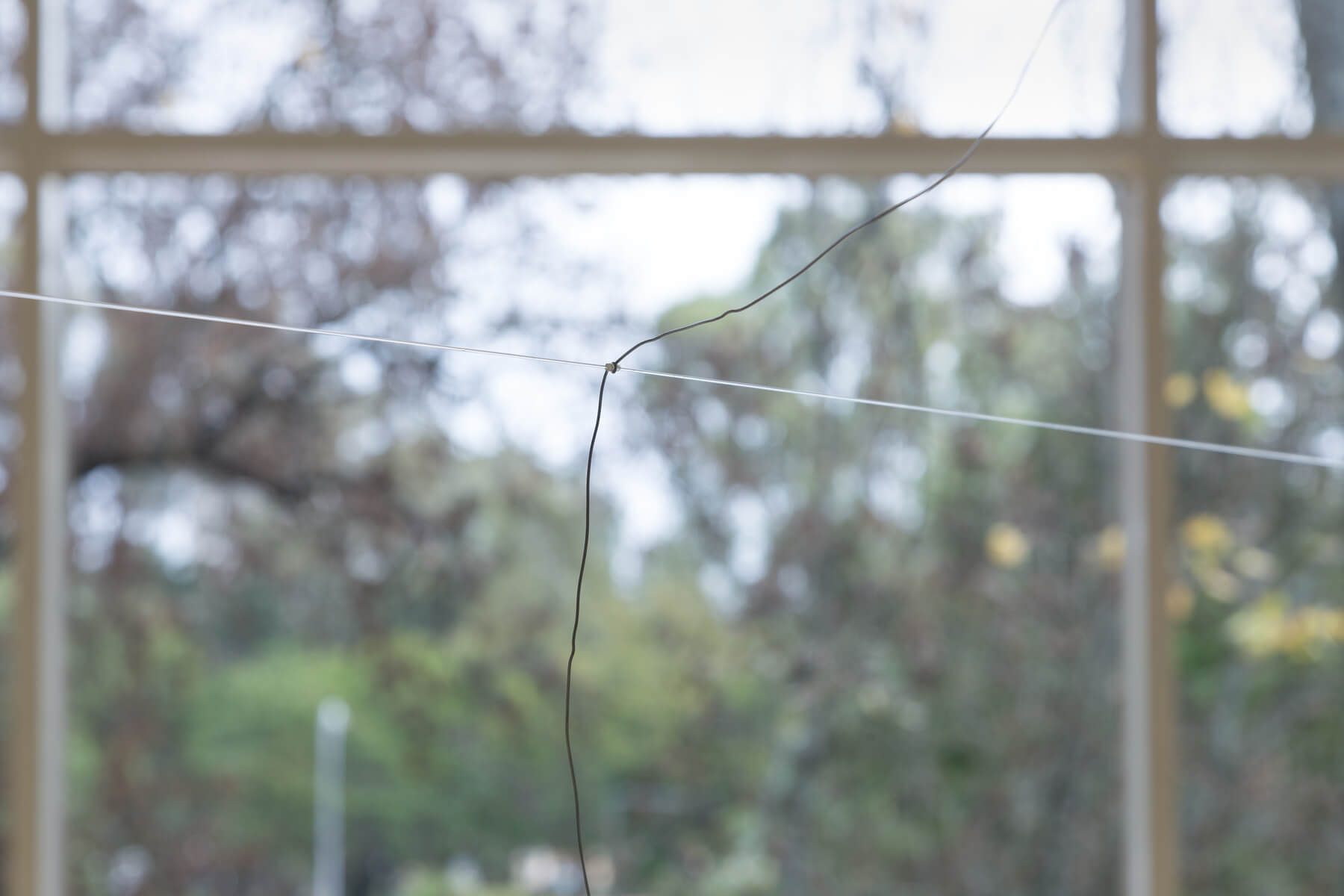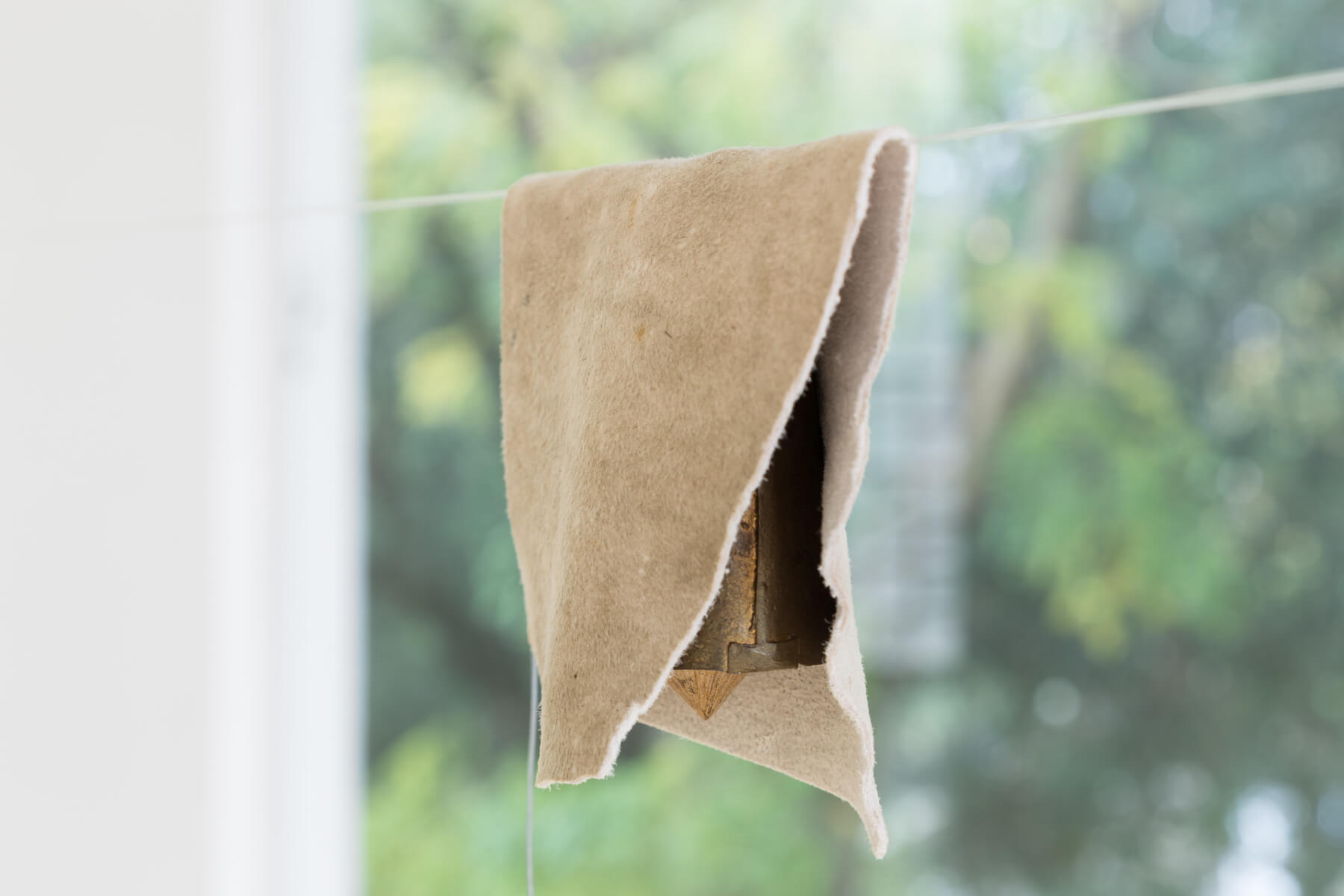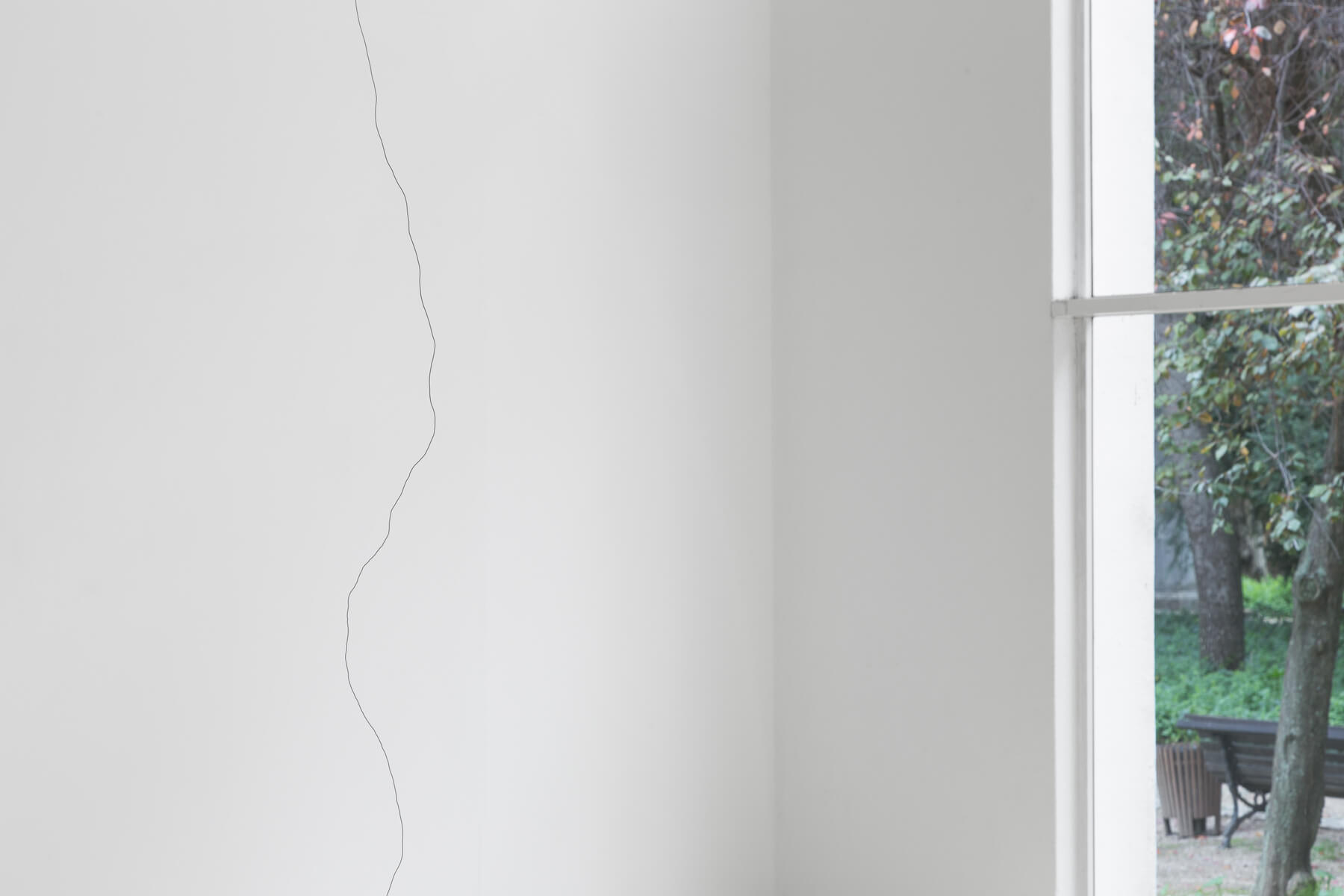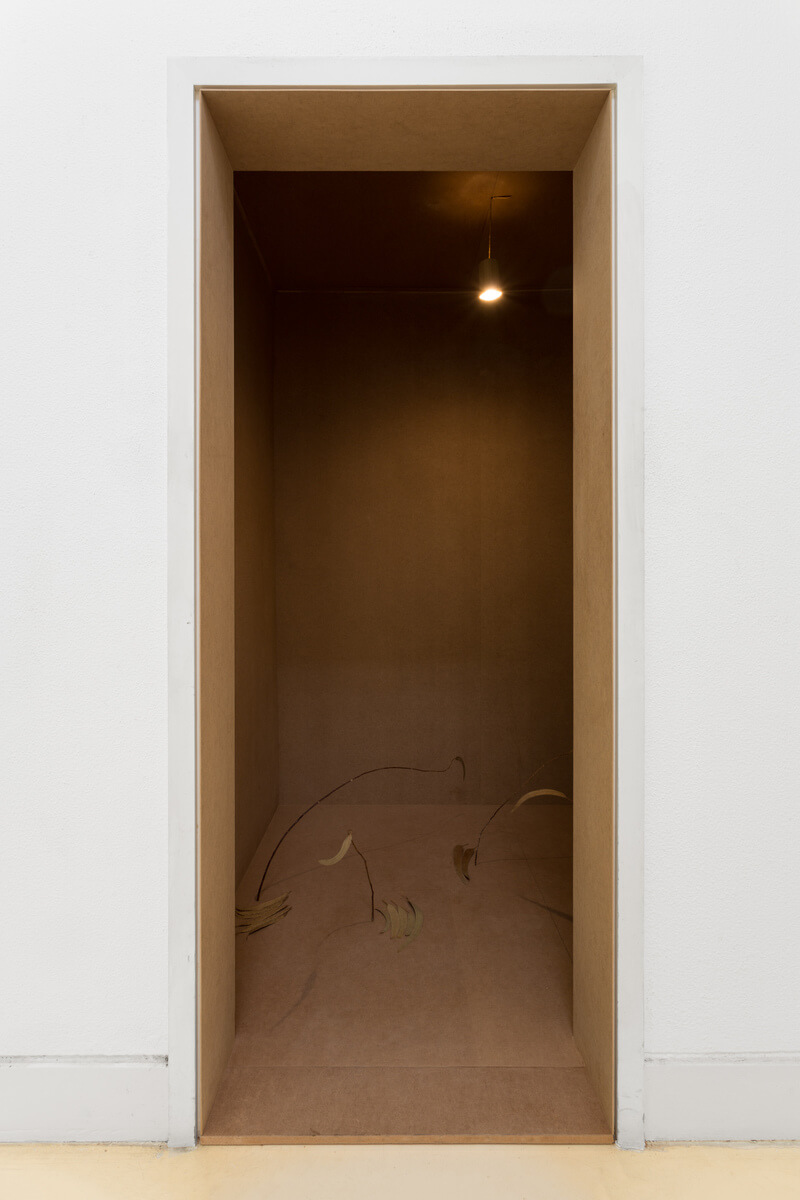– 21.02.2016
The gateway to the courtyard leads to a garden split in two by a straight path. To the left, a clump of trees. To the right, a wide lawn separated from the segunda circular (circular road) by a high wall.
The sound coming from this road is steady, constant. It does not stop. On the left side, birds chirp and sometimes peacocks scream, cutting through the permanent rumble, thus creating some sort of brief sound holes.
I realize there are dominant and dominated sounds; that there’s tension and conflict in the universe of sound.
I discover notions such as the son masquant (disturbing sound) and the son masqué (disturbed sound).
Standing on the periphery of the part of the garden that is covered with trees, where birds live and stay overnight, the white pavilion, with its mostly glazed façades, seems a massive body, expectant and open to its outer part.
With both access and services zone at its core, the building draws itself symmetrically, its central zone a fulcrum of sorts.
On the first floor, space generously presents itself to the surrounding canopy as if it was a stage.
There was a certain interest in transporting an organic feel of imbalance to the interior of this white, hard and symmetrical space.
That’s how the work whose name this exhibition bears came about. Despite its discreet expression, the drawing evolves within the pavilion. Carefully driven by the audience on ground 0, it gives rise to a vibration that induces a sound. A sound that can be heard all over the exhibition space.
There’s another piece: a switch. A small space (an appropriation of another space, structural yet at that time not functioning), that claims to be a deeper entry to the permanent body of the building and, therefore, to the brief and light body of sound.
-Armanda Duarte, November 2015
– 21.02.2016











